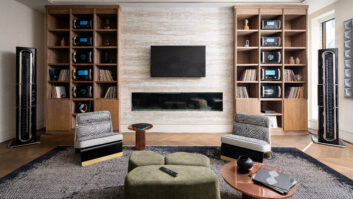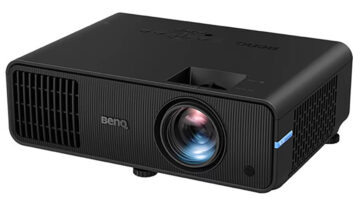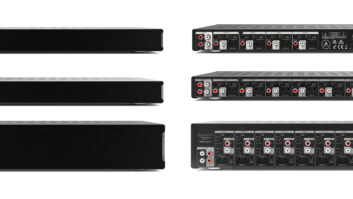“The room is the final audio component,” acoustician Dr. Floyd Toole once said. “Rooms audibly modify many aspects of sound quality.” What Toole was referring to is still a difficult truth that all installers face today: room acoustics can negatively alter the performance of your carefully planned and executed system installations. In a way, they are like an added component that you didn’t specify and you can’t control.
This reality can be vexing, both for installers who may face clients unhappy with the sound of their installed systems and for equipment manufacturers who push the boundaries in electronic component design, only to see these new levels of performance ruined as a result of poor living room acoustics. To address this problem, for years several brands have offered technology in their components that manipulates the equalization of the sound output to attempt to correct for the acoustics of the room. This is not easy to do.

Fueled by advances in digital signal processing technology, newer solutions have emerged that promise to measure the acoustics of a room and use digital filters to more accurately counter the effects of the room’s acoustics. Systems from companies such as Tact, Trinnov Systems, ARC (from Anthem), Steinway Lyngdorf, and the more-mainstream Audyssey, promise to give installers more control. But one system in particular, Dirac, by all accounts appears to be building substantial momentum.
Most of these systems do a serviceable job and even some of today’s mainstream AV receivers include some version of an auto-EQ function that attempts to address the issue of poor room acoustics, or subpar speakers. But as many experts will tell you, sometimes these systems do more harm than good, leading more discerning users to switch off the room correction circuitry when seeking to critically listen to music. Even in the case of some of the better, more respected systems, you might notice an improvement in, say, low frequencies (bass management), but that this benefit is often offset by a negative impact on upper-midrange and high frequencies, which exacerbates listening fatigue.
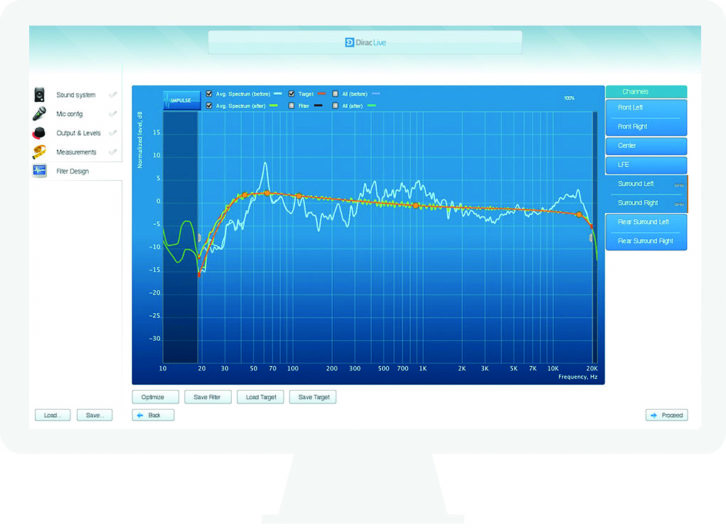
Something Was Up at Uppsala
In the late 1990s and early 2000s, a small band of scientists and engineers came together at a prominent Northern European research center, Uppsala University in Sweden, to solve this problem. Uppsala University has a particular focus on the natural sciences and this small team, consisting of four students and two professors, was deep into the research of sound wave propagation, room acoustics, and loudspeaker performance. One of those original scholars, a young graduate student who did his master’s thesis on the scientific principles surrounding speaker and room correction, was Mathias Johansson, who eventually became CEO of the company they formed to market the solution borne of their research. Launched in 2001, the team at Dirac Research was young and hungry…and, with a self-proclaimed “foolish” sense of determination.
In those earlier days, most correction systems suffered from two critical problems. First, they measured room acoustics and applied a set of filters seeking to knock down frequency peaks or boost up frequency valleys–some spurious, some standing waves (referred to as room modes)–to yield a flatter frequency response. But these systems only addressed frequency domain issues, often through the heavy application of equalization filters, that as a byproduct of their function could introduce phase and time-shift anomalies. If you apply too much adjustment or correction in an attempt to counter frequency deviations, you can end up with a less natural sounding system.
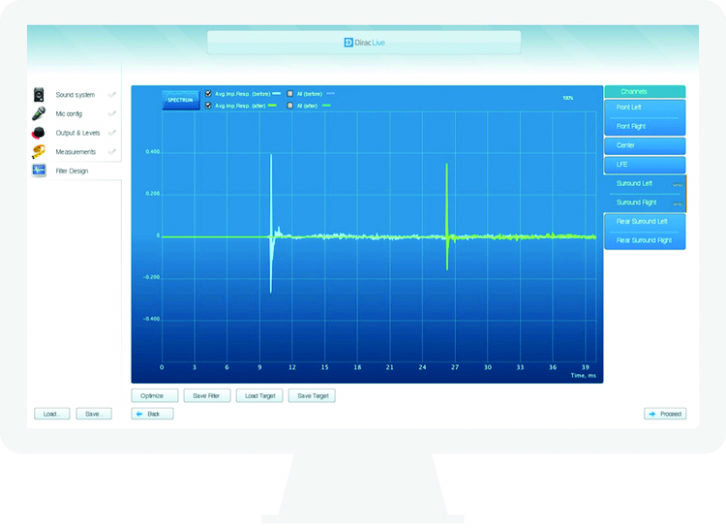
The other issue with these early systems was that they usually relied on only one measurement of the room–typically taken at the sweet spot or prime listening position. But a consumer’s living room is a large space that encompasses a three-dimensional soundfield. Taking a measurement at only one position could not capture an accurate representation of the overall room acoustics. And any adjustment for the sweet spot would not properly apply for the other listening positions in the room–even those right next to it. There had to be a better way.
A Different Approach
The team at Dirac was taking a decidedly different approach by focusing its attention on the room’s impulse response (a time-domain issue).
“We were foolish enough to think that it’s possible to optimize a speaker and even room behavior in the time domain, and not just through traditional equalization,” Dirac CEO Mathias Johansson said. “That turned out to be difficult, but we were foolish enough to work at it for a pretty long time and we ended up with something that worked quite well.”
The Dirac team achieved a major breakthrough by creating a system that addressed room acoustic issues with optimization of both frequency domain and time domain anomalies. They had created a better-performing, better-sounding system and could hardly wait to demonstrate it to the high-performance audio community.

“So we had a method that was really good at optimizing both impulse responses and frequency responses in rooms. We thought, ‘Oh, this is great…the audio industry will love this,’” Johansson recalled, enthusiastically. “As it turned out, they weren’t so keen in the beginning. They were, I would say rightfully, very skeptical about this because it sounded like we were maybe doing more than you would think was physically possible.”
Johansson and his team knocked on a lot of doors and performed many demonstrations of this new approach to room correction, but they struggled to find an adopter. Eventually, however, high-performance automobile manufacturer BMW agreed to review the system.
“They were kind of tired with existing suppliers’ lack of innovation,” Johansson explained.
BMW gave the Dirac system to their engineering team to thoroughly test, a remarkable achievement considering that Dirac was a complete unknown entity with no customers and no systems out in the field–and Dirac’s system had not been specifically designed with the automobile industry in mind. Yet, BMW was searching for new technology to improve the performance of its premium-grade sound systems.
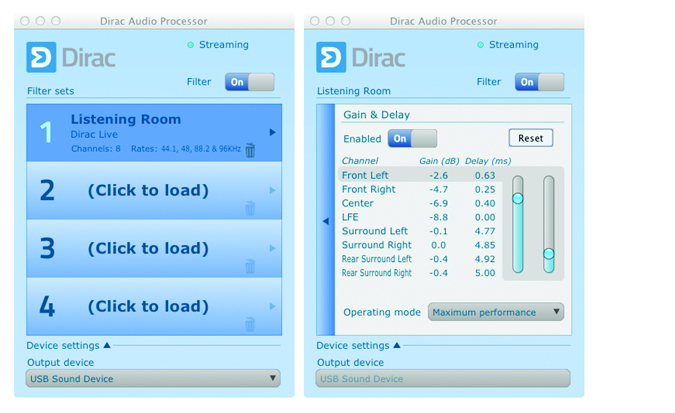
BMW engineers were so impressed that the company quickly moved forward, incorporating this new sound correction technology into its premium audio package, and even promoting it in its manuals and associated sales materials. BMW’s support brought tremendous credibility to Dirac as a company, and more importantly, to Dirac’s mixed-phase approach to digital room correction.
Greater Coherence Through Time Correction
Contemporary room correction systems utilize Digital Signal Processing (DSP) circuits. DSP circuits optimize the system’s performance through the use of sophisticated chips and algorithms that create complex digital filters whose calculated coefficients calibrate the system’s output for the room acoustics. Dirac’s most popular system, Dirac Live, can be implemented in hardware, software, or combination systems.
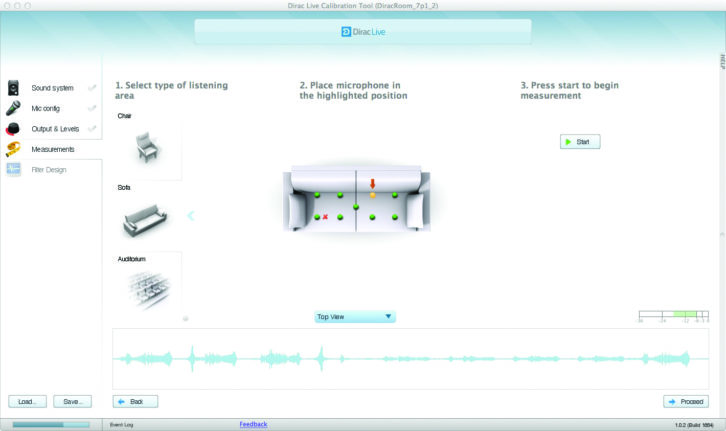
Most digital room correction systems operate using minimum phase filters for frequency domain filtering. While there can be some time-domain benefits with these systems, they are predominantly focused on minimizing the filter’s negative impact on time-domain performance. They do not work to optimize the actual time-domain performance of the system.
Like others, Dirac’s system incorporates frequency domain optimization. But the genius of their system is that Dirac engineers didn’t stop there. They developed a mixed-phase room correction system with both IIR (Infinite Impulse Response) filters as well as FIR (Finite Impulse Response) filters. This allows their system to optimize for time-domain issues as well as frequency domain issues.
The human ear locates sounds (and perceives a stereo soundstage) by sensing minute differences in the arrival time of frequencies in and between the ears. To focus on the impulse response (the room’s initial reflected response to a signal) Dirac Live plays a frequency sweep through the system and measures the reflected response in the room. Then through a process called deconvolution, this measured sweep is compared with the sweep generated by the system in the time-domain. Dirac Live will then correct for time domain anomalies that it discovered from the differences between the two signals. And it is this time-domain optimization that has many in audiophile and engineering circles talking.
“What you notice with Dirac is that the room modes are corrected, the aberrations in the frequency response in the frequency domain are corrected, and that’s kind of what everybody does,” said Dan Laufman, founder of Emotiva Audio, a Dirac licensee. “But when you get this time-domain correction in the listening window, all of a sudden there’s a three dimensionality and a cohesiveness to the imaging that’s almost palpable. I hear this from customers over and over again; they all comment to me how the soundstage is so coherent across the front, and how natural it sounds. This I really believe has to do with their time-domain correction.”
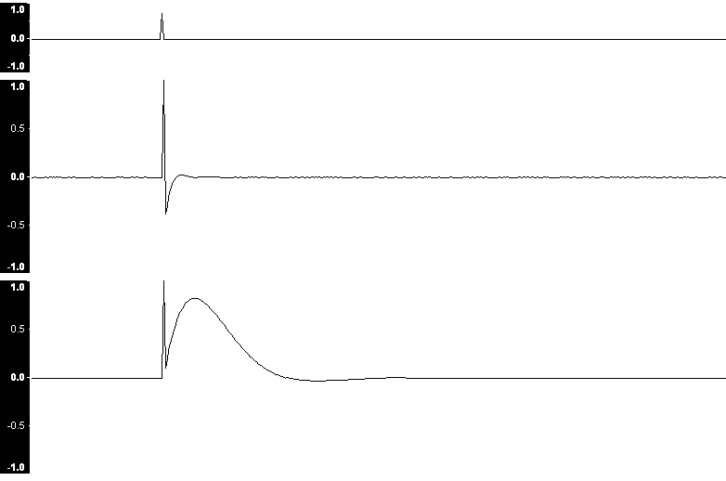
Dirac also features specially tuned algorithms that are designed to perform as much correction as possible, without going too far. With too much adjustment, the result can become less natural sounding. This is an attention to detail by Dirac that leads to the more musical and more coherent sounding system that Laufman referred to.
More Measurements For More Accuracy
Fundamental to this new approach is the concept of using multiple acoustic samples to better define the soundfield in the consumer’s home. Dirac’s system requires no fewer than nine separate measurements. The system not only retains the measurements at the set points, but it also computes for the spaces in between to build a more accurate three-dimensional model of the room’s soundfield. The user selects the sound “curtain” (band of frequencies) or space size with intuitive designations such as a chair or sofa, or auditorium. Then the measurement process is conducted.
With an easy-to-understand user interface, no special training is required to optimize your system. From your room measurement samples, the system generates a target curve for your space.
Dirac even allows you the ability to manually adjust this target curve to accommodate personal preferences. “Dirac Live gives you an easy template for the measurements,” said Jeff Hipps of Theta Digital, which uses Dirac Live in its Casablanca platform. “And it gives you a recommended target curve, which will probably get you 85 percent of the way toward optimum room correction.”
Growing Network of Licensees
Alex Camara, CEO of specialty manufacturer AudioControl, explained why, after testing three different room correction systems, his compay chose to partner with Dirac Live.
“I think three things probably drove our decision,” Camara explained. “Sound quality [is] number one, to be able to complete a correct analysis of the room in a way that we feel is very intuitive and gave us a great outcome at the end. You can hear the difference. Number two, both installers and consumers are looking for simpler ways to be able to calibrate and to adjust for rooms today. So [it ’s important that] the UI [user interface] is very intuitive, very simple to use, and the process itself is just very logical and straightforward; Dirac is doing most of the work. Finally, number three is the fact that the company is very progressive in its approach and very agile in its response.”
Dirac continues to build its network of supporting partners and licensees, many of whom are quite effusive in their praise of the system. Brands such as BMW, Rolls Royce, Emotiva, Pioneer, Harman, Theta Digital, AudioControl, ARCAM, Oppo, DataSat, and Volvo are offering products featuring Dirac Live technology.
New Markets and New Technology
The company is also continuing to expand the markets that it serves. It will soon offer Dirac optimization for headphones, both in-ear and onear. Not stopping there, Johansson said that this year, 100 million or more smartphones will ship with Dirac sound correction technology built in, to make an audible improvement in the included speakers and earbuds.
Finally, Dirac has created an entirely new technology called Dirac Unison that will launch later this year. Unison actively sends a correction signal to added speakers in the consumer’s system to correct for acoustic anomalies. Say, for example, you are listening to stereo music through your 5.1-channel home theater. In addition to the two-channel music from your front left/right main speakers, your other speakers will emit a “correction” signal that is the inverse of the room mode frequencies in your room…seemingly magically neutralizing the negative room issues. Licensees who have heard the system say that they can’t wait to get their hands on Unison, with one person stating that it “blew my mind.”
“Dirac is doing something really unique,” Hipps said. “They’re trying to get the system to act as if the [room] reflections never occurred.”
The Dirac Impulse

What does a British theoretical physicist born in 1902 have to do with the performance of your system installations today? Paul Adrien Maurice Dirac (dih-rack´) was a prominent and respected physicist during the golden era of the physical sciences and mathematics who hung out with historical icons like Einstein, Fermi, Bohr, and Oppenheimer. He is the father of a crucial mathematical function that describes a perfect impulse response that is infinitely short in duration, with infinite energy (the Dirac impulse), and the namesake of Dirac Research.
A regular RS contributor, Ted Green publishes a widely read weekly CE business blog at Strata-gee.com, the online home of The Stratecon Group, his marketing and strategy agency for the tech industry.
